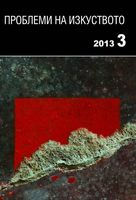Подови мозайки от античния Филипопол – проблеми и състояние
Archaeological Sites with Mosaic Floors in Ancient Philippopolis: Problems and Condition
Author(s): Cynthia Luk, Elena Kantareva-Decheva, Mina BospachievaSubject(s): Cultural history
Published by: Институт за изследване на изкуствата, Българска академия на науките
Summary/Abstract: The modern city of Plovdiv, successor to the ancient Philippopolis, is the second largest city in Bulgaria and one of the oldest cities in Europe. It is strategically situated at the crossroads of Europe and Asia Minor, in the middle of the Thracian lowlands, around seven unique hills. Throughout its long history Plovdiv has been inhabited by Thracians, Macedonians, Romans, Byzantines, Slavs and Proto-Bulgarians. Remains of the ancient town of Philippopolis were discovered 3–4 meters under the level of the present-day cen- tre of Plovdiv. A large number of the excavated public and private buildings were decorated with floor mosaics. The mosaics in ancient Philippopolis date from two periods: the II and III century AD and the IV well through the VI century AD. The mosaics of the first period belonged to thermae and representative buildings, while those of the second period occur in Early Christian basilicas, residences and private homes. Over the years, the bulk of the mosaics have been lifted with some of these transferred to new supports, but there still are a lot of fragments, left untreated with the attached protective facings and kept in inappropriate conditions. The problems of the untreated mosaics are mainly related to the adhesives applied to attach the facings, which have lost their adhesive qualities because of ageing and are susceptible to microbio- logical growth. The biggest problem with mosaics conserved over 20 years ago appears to be their new supports (backings). The most popular technology then was to lay epoxy resin with inert fillers onto the back of the mosaic along with reinforcing iron bars. Due to the lack of proper metal construction, improper storage and the ageing of the epoxy resins, these mosaics are now in quite poor condition. All these fragments have to be urgently rеtreated. Mosaic floors preserved in situ and to be exhibited along with part of the buildings they belong to are: the EIPH- NH building, the building with the Ma- rine Scene floor mosaic, as well as the two basilicas.
Journal: Проблеми на изкуството
- Issue Year: 2013
- Issue No: 3
- Page Range: 13-16
- Page Count: 4
- Language: Bulgarian
- Content File-PDF

